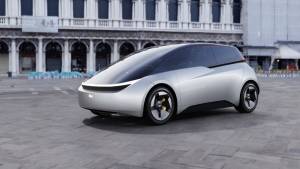An autonomous future
Like it or not we have to accept that autonomous driving cars are the future. Off late we've been seeing more and more companies displaying their versions of self driving cars. This has led to a flurry of media reports about the joy of driving being a thing of the past with machines beginning to take over. The reason why autonomous vehicles are in the news isn't just because the various subsystems are slowly coalescing into a functioning self-aware system that can guide a vehicle through the real world. The reason is that everyone seems to believe that there is no viable way to make the road network keep up with the rate of automotive expansion. However, eliminating human drivers and their relatively less predictable and erratic decision making can release significantly more road space, according to studies. A human may need four feet of space on each side of the car to feel confident. A machine, surrounded by machines, would need barely centimetres, trusting both the predictability of the behaviour and the ability to react within milliseconds to keep the occupants safe.
 BMW' self driving car even drifts
BMW' self driving car even drifts
Cars are becoming more and more self aware since earlier than you think. Consider the four aspects of a car that we have control over. Those would be the engine, gears, brakes and steering. If the car can operate any of these features it would have some autonomy. By that logic, automatic gearboxes are the first form of autonomous driving, albeit rudimentary, and they've been around since the early 1940s. Things like cruise control followed and decades of development has resulted in today's features that selectively brake, accelerate and even park the car. However we are now approaching the stage where all these systems are beginning to communicate with one another and that is when we start to see true autonomy. It's relatively easy for a car to brake if it sees an obstacle or make steering correction to stay in a lane. But the true challenge arrives when we expect cars not to just have the ability to control speed and direction, but also to decide what speed and direction is required and at what point.
 The self driving A7 showcased at the 2014 CES can handle medium to heavy traffic conditions
The self driving A7 showcased at the 2014 CES can handle medium to heavy traffic conditions
So when does one, or the laws of the land, consider a car capable enough to make these decision successfully and make them legal? This requisite reworking of the legal system is one of the biggest walls that autonomous technology has to scale. The technology will catch up soon enough. Some systems however are almost production ready. Mercedes-Benz's new S-Class can follow vehicles in traffic jams automatically, detect crossing vehicles and pedestrians and boost braking pressure as required. Audi's A7 self driving concept recently showcased at CES can handle medium to heavy traffic at speeds of up to 60kmph. The technology exists, it simply has to evolve to handle higher speeds and more situations.
Google's own self driven car has been around for a while but while it has a huge array of equipment mounted on the roof, Nissan's self driving Leaf and the aforementioned Audi A7 have all their scanning equipment neatly hidden within the body work. BMW has gone so far as to show a car that can pull lurid drifts all by itself. Beyond the immense cool factor, consider the serious implications of this self drifting machine. It means the systems have gotten so capable that they can monitor the surrounding environment and control a car that is beyond the edge of adhesion, a car that is, realistically, already out of control. It simply shows that these systems are edging closer and closer to reality. A quick mention of bikes their dynamic limits are far more difficult to calculate and it will be longer before we see such systems on two wheels. But more importantly, in most markets (this excludes ours) bikes aren't seen as point A to B tools. Most bikers simply want to ride so autonomous systems would have a much lower commercial appeal.
To sum up, almost all accidents are caused by human error. When you take the humans out of the equation you have a much safer environment and that's the ultimate positive. In addition, the number of people actually interested in driving themselves around is going down. In the developed world, where automobile populations are high and public transport infrastructure is well developed, most, even the affluent find the latter far less time consuming than driving or being driven. It's a battle personal vehicles cannot win. The question is how long will it take? We personally feel that the transition phase from self driven to a fully autonomous is going to be a long and difficult one. It's a future we shouldn't see in our lifetime. And thank the stars for that.














